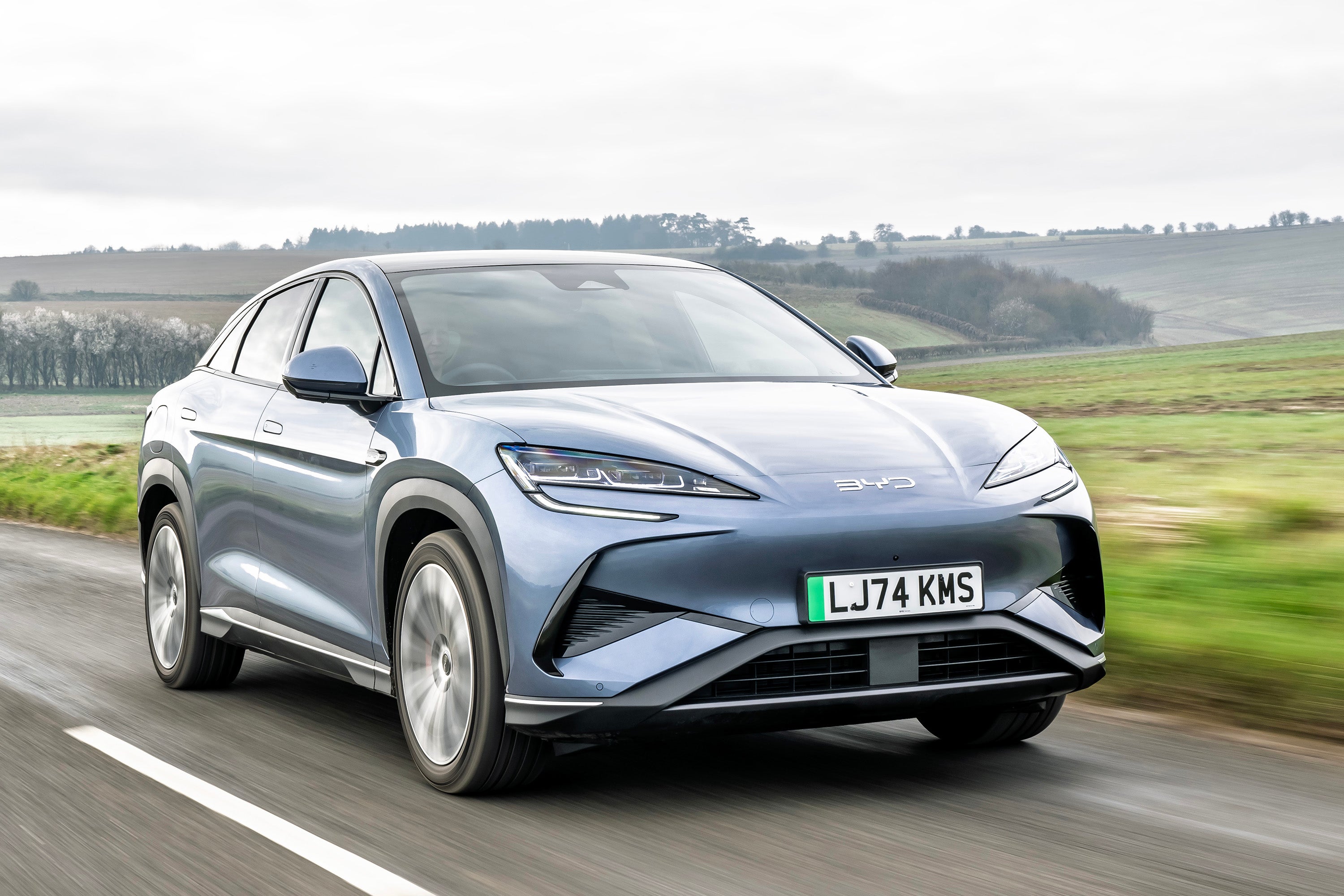BYD Sealion 7 Review 2025: Price, specs & boot space
Written by Matt Robinson
Quick overview
Pros
- Well equipped
- Excellent interior
- Up to 230kW rapid charging capability
Cons
- Some rivals offer more range (and aren't called 'Sealion')
- Technology needs refinment
- Ride/handling disappointing
Verdict: Is the BYD Sealion 7 a good car?
"The Sealion 7 is the latest car to emerge in BYD's assault on the European establishment. It's impressive in many ways, but there are a fair few kinks that need to be ironed out before it can truly be taken seriously against similarly priced, better-known rivals."
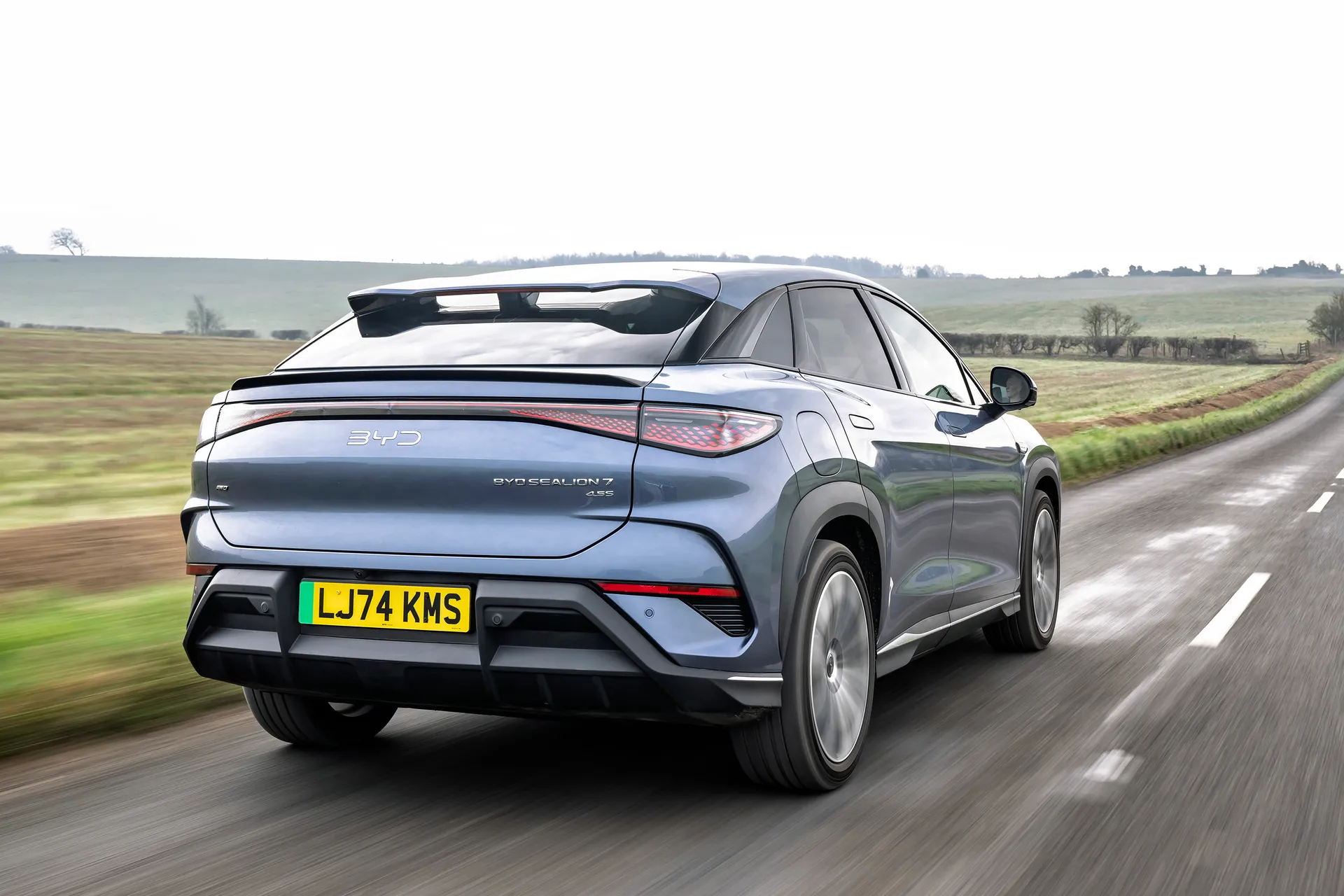
The BYD Sealion 7 is yet another car from the Chinese carmaker with an aquatically-themed name (see also the BYD Dolphin and BYD Seal), but if you can get past that, there's a lot to like here. BYD might not be a very well-known brand in the UK just yet, but it's a huge deal in its native country and is already making waves on our shores for its range of electric cars.
This continues with the Sealion 7, which takes aim at the Tesla Model Y, amongst others. It comes with stacks of equipment, has a great interior, and in its range-topping guise is plenty fast, cracking the 0-62mph time in 4.5 seconds.
The pricing is pretty strong, starting at £44,990, and that's a bit of an issue considering that the Sealion 7 is a bit rough around the edges when it comes to some of its tech plus its disappointing ride and handling.
Then again, you are getting plenty of equipment for your cash. And unlike some rivals, there isn't a big list of expensive options that might inflate the price further. That kind of buying simplicity will be a breath of fresh air for some.
We've driven the range-topping Excellence version of the car
Is the BYD Sealion 7 right for you?
If you can cope with the name, it might well be. And hey, at least BYD has stopped putting 'build your dreams' on the boots of its cars. We've been mostly impressed with all of the BYD products we've tested thus far, and the Sealion 7 largely carries on that trend.
It's worth a look if you fancy something a little different and don't mind overlooking more obvious options like those from Tesla, Volkswagen or Kia while remaining competitive in terms of price, range, performance and build quality. Just bear in mind that most of those cars will be nicer to drive.
What's the best BYD Sealion 7 model/battery to choose?
The entry-level version with the 83kWh battery and Comfort trim grade will tick all the boxes for most. The range is decent at 300 miles, its output of 313PS is not to be sniffed at, and you're not losing out on a great deal of equipment - it's very well-equipped and a good chunk cheaper than the AWD Design model.
What other cars are similar to the BYD Seal?
The Tesla Model Y is the closest car to the BYD Sealion 7 not just in terms of range and price, but also size/shape. Both cars are classed as SUVs but aren't exactly lofty, boxy things like a typical vehicle from that genre. The BYD is cheaper, but the Tesla will go further on a full charge.
That's far from the Sealion 7's only rival, though. This has become a busy section of the electric-car market, with the Kia EV6, Volkswagen ID.5 and the Hyundai Ioniq 5 ranges all starting around the £45k mark as well. It has its work cut out for it, in other words.
Comfort and design: BYD Sealion 7 interior
"The BYD Sealion 7 has a great-looking, high-quality interior with an attention-grabbing rotating screen. That last element could be seen as a bit of a gimmick, as impressive as it is when in operation."
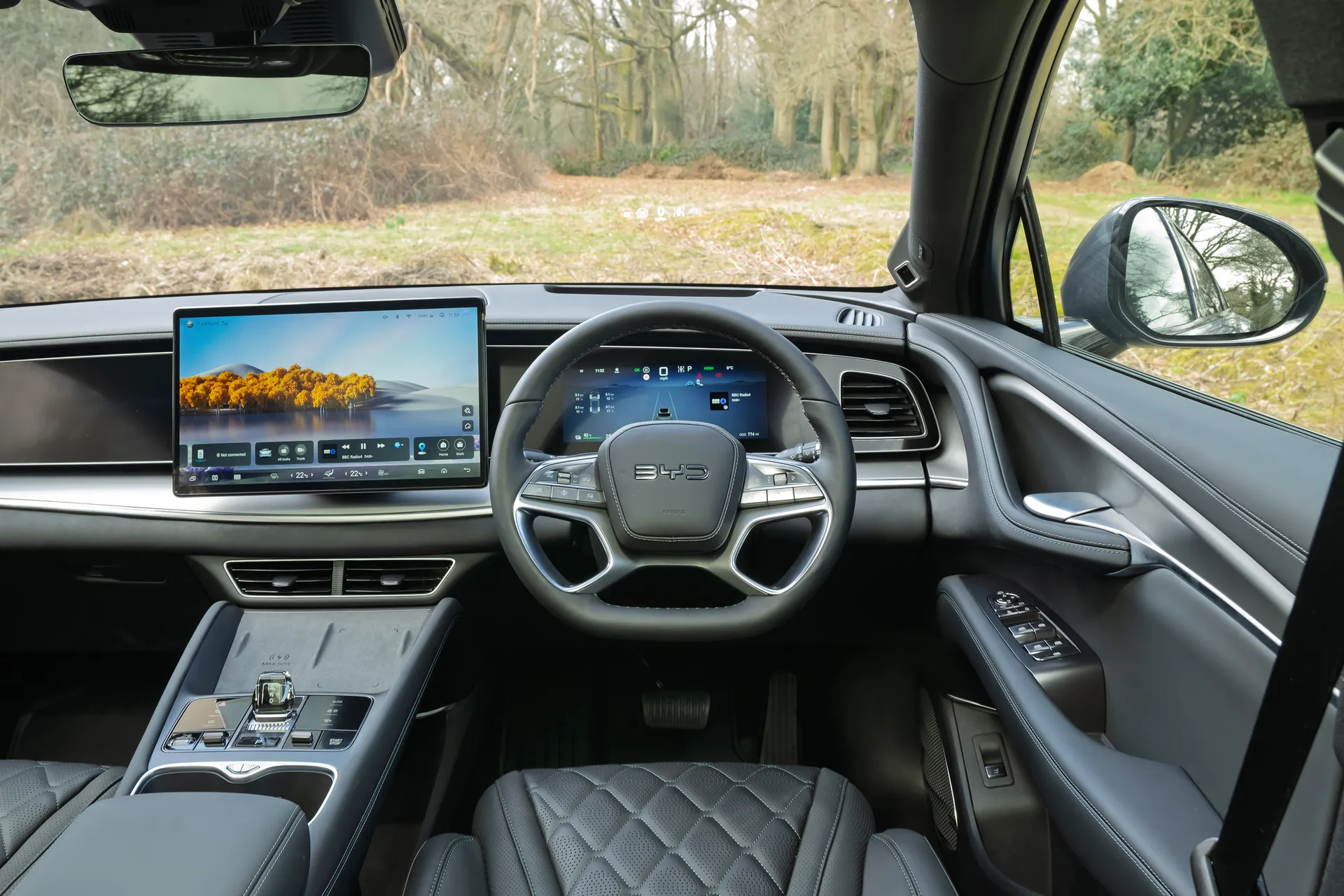
Compared to the almost aggressively minimalistic cabin of the Tesla Model Y, which even does away with an instrument cluster behind the steering wheel (pretty much everything is done via the central touchscreen), the BYD Sealion 7 is more conventional inside.
There are some interesting touches here, though, including a 128-colour ambient lighting system which links in with a light-up panel in the dashboard. Plus, the digital instrument cluster is embedded into the dash, rather than awkwardly poking out of the top, as has become quite common.
It does without the 'guitar string' door pockets of the Atto 3, which seems like a good move, especially if you have kids who might immediately become obsessed with them. You do, though, get a rotating central display, which is becoming something of a BYD trademark. It's certainly an impressive feature that'll wow your passengers, but we can't help but feel it's a bit of a gimmick.
Of greater use is the double wireless charging pad, which should reduce arguments should both front occupants of the car need a bit of extra juice for their smartphones.
Quality and finish
As with other BYD vehicles we've experienced, the Sealion 7 does well in this regard. The cabin is awash with soft-touch materials, with cheaper-feeling trim pieces seemingly absent from the cabin. The interior also features an interesting blend of different finishes and colours, so it doesn't look drab and unappealing. We'd be confident with everything standing the test of the time, perhaps aside from that rotating screen, which strikes us as a needless potential point of failure with little gain.
Infotainment: Touchscreen, USB, nav and stereo in the BYD Sealion 7
The BYD Sealion 7's clever rotating infotainment screen measures a sizeable 15.6 inches. It's the same system we've already experienced in the BYD Seal, and we prefer it in landscape mode, so beyond rotating it a few times and making passengers go 'ooh', we're not sure what the point is.
It's not the most user-friendly out there in terms of its menu systems, and the graphics could do with being a bit brighter, but it's definitely responsive enough. It's also a shame that the climate controls along the bottom (there are no physical buttons or dials for these, unfortunately) are so small, making them difficult to use on the move.
If you'd rather use the voice activation system, then good luck - we couldn't get it to do much other than rotate the screen. Asking it to change to a particular radio station, changing particular settings and so on seemed to result in the system saying it didn't understand.
Speaking of a lack of understanding, there were also some strange translations cropping up on the instrument cluster, including 'In the Sport mode, long press Confirm to entry' for the 0-62mph timer (yes, it has one, and no, we're not sure there's much point in it). Once the function has been used, it amusingly declares 'Accelerated successfully', just in case you weren't sure.
The in-built navigation was mostly fine, although we did experience a few bugs with it, including one junction which was apparently 1.2 miles away until we were pretty much on top of it, and some strange flickering on the map. Many users will prefer to use their preferred mapping app, which will be easy enough as Android Auto and Apple CarPlay smartphone connectivity is included as standard, as should be considered the norm for a car costing this much.
Along with various USB-C charging ports dotted around the cabin, there's also a dual charging pad which can fit two phones side by side. It even has a little vent to stop things from getting too toasty (albeit only on one side), which is a clever touch.
Audiophiles are well catered for, meanwhile, thanks to the presence of a 12-speaker Dynaudio sound system.
Space and practicality: BYD Sealion 7 boot space
With a height of 1,620, the Sealion 7 is a decent 160mm higher than the Seal, so it should feel much roomier inside. You also get a lot more boot space at 520 litres, compared to 400 litres in the Seal. Fold the rear seats flat, and there's a healthy 1,789 litres to play with. That's pretty good, but as with the Seal, the boot opening is a bit tight.
On paper, it might sound like the Sealion 7 is dwarfed by the Tesla Model Y, which has an official figure of 854 litres (2,041 with the rear seats folded), but we should point out that Tesla's number is based on loading the boot all the way to the car's ceiling. The Volkswagen ID.5 probably makes for a more useful comparison - in that car, you get a 549-litre load space which can expand to 1,561 litres with the rear seats folded.
One neat practical touch is the pair of variable-depth cupholders. So, whether you tend to go for a flat white or an extra-large latte for your drive-through coffee order, you should be well-catered for.
Handling and ride quality: What is the BYD Sealion like to drive?
"The ride and handling of the BYD Sealion 7 need some work if the car is to be taken seriously at this price bracket. It rolls quite quite a bit in the corners, and yet the ride is choppy and uncomfortable over some road surfaces."
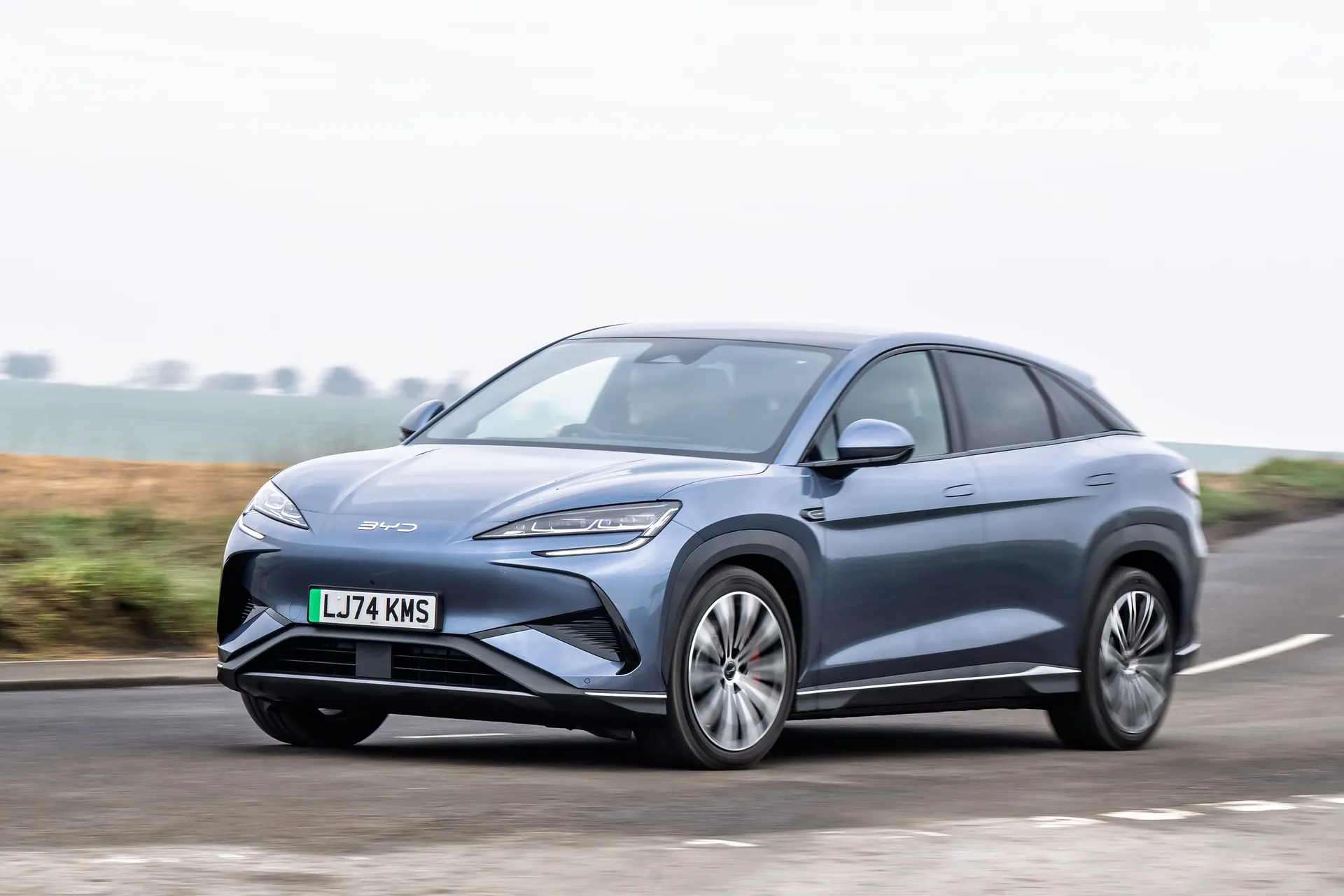
We doubt anyone is going to be buying a Sealion 7 for its dynamic prowess, but even so, we were expecting more, primarily because the car isn't comfortable enough when driven sedately. The damping manages to be both soft and choppy at the same time, so the ride never quite settles, leaving the car constantly jiggling over all but the smoothest of road surfaces.
There's a reasonable amount of body roll in the corners, so this isn't a car you'll want to drive along a country road with any enthusiasm, even if the performance of the range-topping model (more on that shortly) might encourage you to give it a go. The steering meanwhile doesn't provide much in the way of feedback from the road surface, making for a vague driving experience. The steering weight is about right, at least, and it's more than quick enough when going through the lock.
The all-wheel drive versions provide plenty of grip, so even when you're deploying the full 530PS, it'll go to the asphalt with minimal fuss. We've only driven the car in dry conditions, but we've no reason to suspect it'll feel assured and capable when it's damp.
The Sealion 7 doesn't feel blisteringly quick (for that, you'll want a Tesla Model Y Performance, which does 0-62mph in 3.5 seconds), but it definitely gets up to speed as advertised. A bit quicker, in fact - our sole use of the timer resulted in a 4.4sec 0-62mph dash, bettering the factory figure by a tenth of a second.
Really, the 313PS version is all the performance you could ever need, but given that many will be getting a Sealion 7 as a company car on low Benefit in Kind tax terms, the difference in monthly payments will be minimal. With that in mind, we get why some might just go for the range-topper.
What motors and batteries are available in the BYD Sealion 7?
While a Tesla Model Y Performance is - as mentioned - a much faster-accelerating car than the Sealion 7 AWD, BYD was proud enough to put a '4.5s' badge on the back hinting at its 4.5-second 0-62mph time, which is very informative. And also a bit naff.
The Excellence features two motors, one for each axle, giving it all-wheel drive. It features a 91.3kWh battery pack. The Comfort uses one motor, which drives the rear wheels, making for a 6.7-second 0-62mph time, and pairs it with an 82.5kWh battery.
In between those is the Design, which has the same battery as the Sealion 7 Comfort, combined with the dual-motor powertrain of the Excellence. This means it's just as quick as the Excellence, but it ends up with the lowest range of the three.
BYD Sealion 7 range: How far can you travel on a charge?
The longest-range BYD Sealion is the Excellence thanks to its larger battery more than offsetting its increase in power. As such, it can travel up to 311 miles on a charge according to the official figure. Numbers like these can be quite tricky to replicate in real life, so it's safe to expect more like 250.
Meanwhile, the Comfort manages 300 miles, while the Design has an official range figure of 283 miles. Again, expect the actual range you get to be lower in reality.
Refinement and noise levels
Mostly, the BYD Sealion 7 is hushed and relaxing on the move, if you're able to ignore its choppy ride. The additional caveat involves some annoying wind noise creeping in around the driver's side window. Since we've only tried the one example, we can't know if it was an issue related to our particular test car, but the fact the front passenger-side window was fine might suggest it's a one off.
Safety equipment: How safe is the BYD Sealion 7?
At the time of writing, the BYD Sealion 7 hadn't yet been tested by Euro NCAP, but we have no reason to expect it to get anything other than a five-star rating, following in the footsteps of the five-star rated Seal and Seal U which the safety organisation has previously assessed. There's also plenty of standard-fit safety technology, including lane-keeping assistance, front/rear cross-traffic alert and blind spot detection.
The driver attention monitor needs some work, though, as it went off erroneously multiple times during our test of the car. It's also very sensitive - a brief look away from the road to change the climate settings (necessary given how small the controls are) is often enough to have the car shouting at you. The lane assistance, too, went off when it wasn't supposed to on one occasion, aggressively steering the car towards a kerb.
BYD Sealion 7 charging times: How much does it cost to charge?
"The Sealion 7's 230kW rapid charging capability is impressive, but that's only available on the range-topping Excellence model"
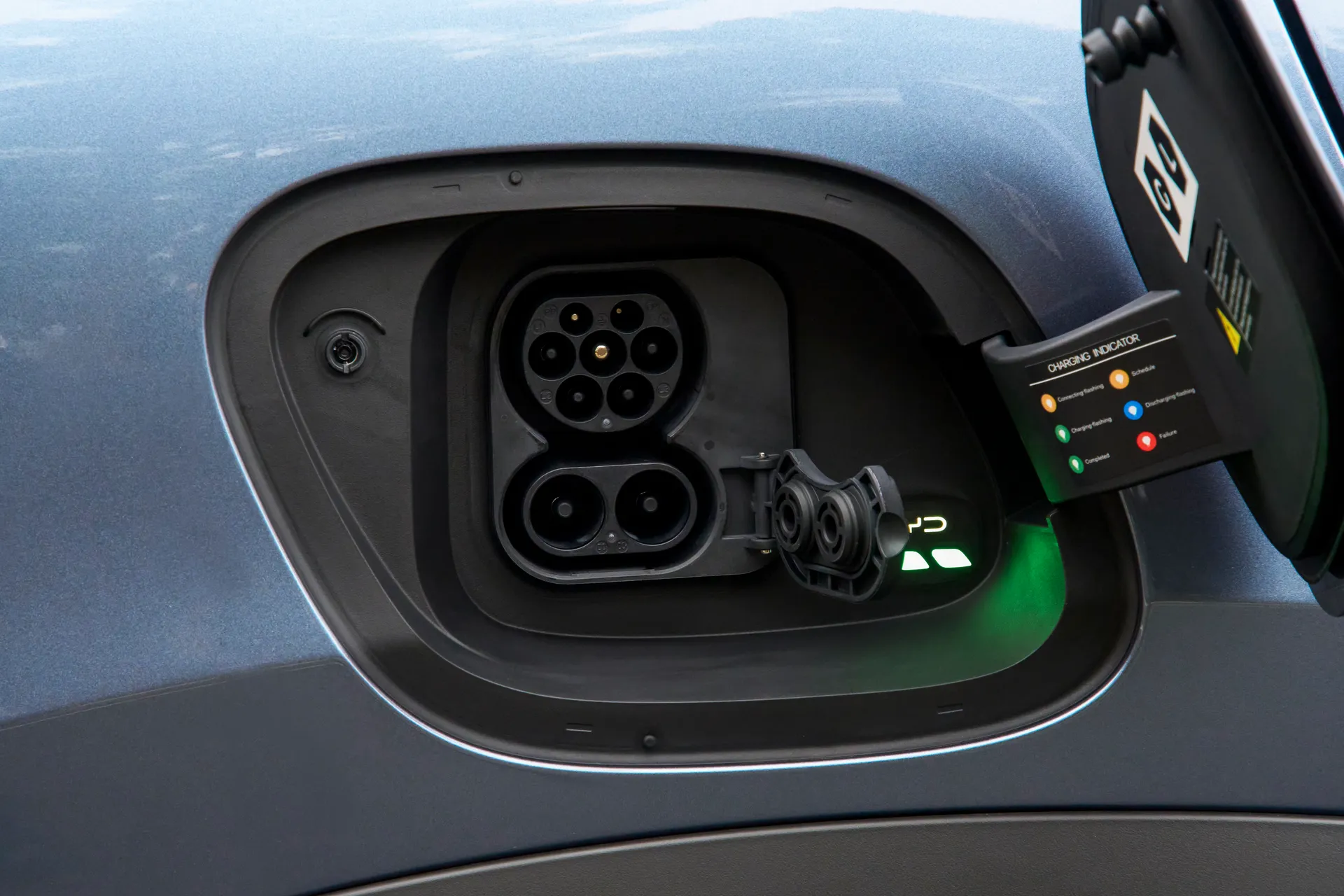
On all other versions of the Sealion 7, the rapid charging capacity is 150kW. That's not too shabby, but the Tesla Model Y does considerably better with a capacity of 250kW across all versions. The VW ID.5 isn't as far ahead, capping out at 170kW.
Plugged into a sufficiently powerful charger, it'll take 32 minutes to charge the Sealion 7 from 20 to 80%. While the Excellence has better rapid charging capability, there's more battery capacity to fill, so the time to do the same 20 to 80% charge doesn't fall all that much. You're looking at 24 minutes based on optimal conditions.
Meanwhile, you'll need about nine hours to charge the Sealion 7 from empty using a 7kW home wall box, assuming your model has the smaller battery. It'll be roughly 10 for the Excellence. It's not recommended to charge an EV from a three-pin, domestic plug, but if you have to, it'll take at least three times as long.
In terms of cost, based on the average current per kWh cost of electricity in the UK, it should be around £20 to fully charge the smaller battery and a few pounds more for the bigger one. If you intend to charge at home, it's worth investigating tariffs which are cheaper overnight to trim that figure down.
BYD Sealion 7 reliability and warranty
The long-term reliability of any BYD model, not just the Sealion 7, is unknown. This is a very new brand to the UK, although the sheer scale of the company means it can't be treated in the same way as an iffy EV start-up.
It's reassuring that BYD models come with a warranty that lasts 93,750 miles or six years, whichever comes first. The motors are covered for the same mileage but with the length of time stretched to eight years, while the battery is covered for eight years and 125,000 miles.
VED car tax: What is the annual road tax on a BYD Sealion 7?
Sadly, the days of avoiding Vehicle Excise Duty (VED) by going for an EV are coming to an end. From 1 April 2025, electric cars are expected to be liable for a flat rate of £195.
Unfortunately, all versions of the BYD Sealion are over the £40,000 threshold for the government's ‘expensive car supplement’, which is a £410 annual charge levied from years two to five of ownership.
BYD Sealion 7 price
"The BYD Sealion 7's starting price of £44,990 for the Comfort model might sound strong, but you're getting plenty of equipment for that price"
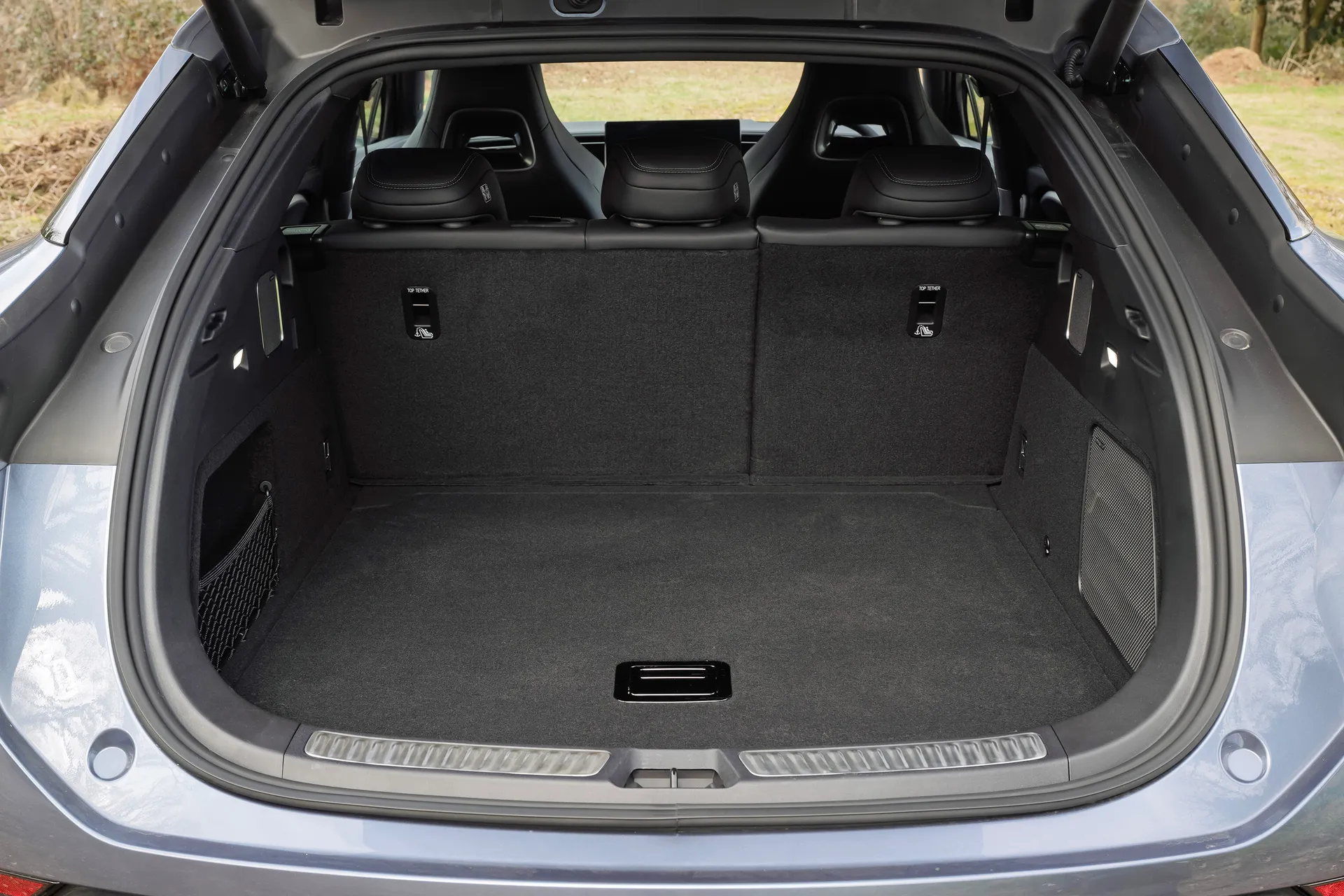
The mid-range Design meanwhile is £51,990, while the range-topping Excellence is £58,990. That makes it more expensive than a Volkswagen ID.5, but refreshingly, there isn't a big list of options to inflate those prices further.
Being such a new car, there aren't any used examples of the Sealion 7 kicking around just yet. It could be worth your while hanging on a little while and getting a second-hand bargain, though. heycar has one-year-old used BYD Seals starting from around £35,000 - that's a huge £10,000 saving on the brand-new price, which sounds pretty astonishing, but these are the kind of depreciation levels many new EVs are currently dealing with.
Trim levels and standard equipment
The standard Comfort-specced car comes with plenty of bells and whistles. These include heated and cooled front seats, heated rear seats, that massive rotating screen, the 12-speaker Dynaudio sound system, the wireless charging pad, dual-zone climate control, an energy-saving heat pump and vehicle-to-load (V2L) capability. The last bit enables you to power various domestic appliances from the battery pack - handy if you're out in the sticks and fancy putting the kettle on.
As well as the extra motor, Design-trimmed Sealion 7s come with 20-inch wheels. Upgrade to Excellence, and the interior will be trimmed in Nappa Leather (otherwise, it's synthetic). This trim level also adds a head-up display and faster rapid charging capability.
Ask the heycar experts: common questions
When is the BYD Sealion 7 coming to the UK?
How many seats does the BYD Sealion 7 have?
How much is a BYD Sealion 7?
Get our latest advice, news and offers
Keep me updated by email with the latest advice, news and offers from heycar.
By submitting you agree to our privacy policy
